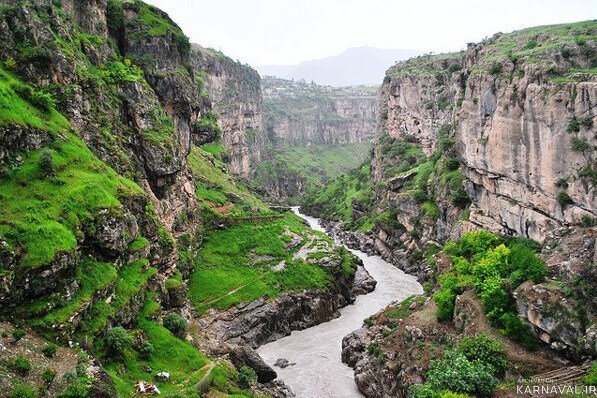Three Iranian Provinces Push for UNESCO Heritage Status for Their Majestic Mountain Streams
In a significant move towards environmental preservation and heritage recognition, the tourism directorates of Kermanshah, Lorestan, and Hamedan provinces in Iran have embarked on a journey to secure UNESCO natural heritage status for their remarkable mountain-originated streams. This initiative aims to highlight the unique ecological value of these regions, particularly known for their pristine water sources, referred to as sar’abs in Persian.
According to Zahra Baharvand, Deputy Director of Cultural Heritage in Lorestan, a permanent secretariat will be established to oversee the registration process. This joint initiative will focus on compiling a comprehensive dossier for the global recognition of these invaluable natural resources.
Key Objectives of the Initiative
- Establish a permanent secretariat for the registration process.
- Compile a detailed file for UNESCO recognition of the sar’abs.
- Facilitate regular specialized meetings to document and manage these natural water sources.
During a recent press conference, Baharvand mentioned, “The three Zagros-region provinces, with their abundant natural resources, temperate climate, and stunning landscapes, have been assigned the mission of preparing a shared dossier for the global recognition of these mountain streams.” This statement underscores the collective commitment of the provinces to highlight their natural heritage.
The initial coordination meeting for this ambitious project took place in Hamedan, where officials from the three provinces gathered. This meeting was significant as it laid the groundwork for a permanent joint secretariat dedicated to the project. Attendees included local heritage experts, cultural authorities, and representatives from various relevant institutions.
Importance of Sar’abs
The sar’abs are not merely water sources; they emerge from natural springs and evolve into large rivers, offering some of the purest freshwater in the region. Notably, the city of Nahavand in Hamedan province is renowned for its numerous sar’abs, which are celebrated for their pristine water quality and ecological significance.
Baharvand highlighted the importance of conducting specialized meetings in each participating province. These meetings will focus on the documentation and management of the sar’abs, ensuring that the groundwork is laid for achieving UNESCO recognition. Additionally, these discussions aim to promote the conservation of these vital natural resources.
Zagros Mountains: A Natural Treasure
The Zagros Mountains are an extensive mountain range that stretches across Iran, northern Iraq, and southeastern Turkey, covering a total length of about 1,600 km. The range begins in northwestern Iran and runs parallel to the western border, extending through much of southeastern Turkey and northeastern Iraq. It continues southeast towards the Persian Gulf, incorporating the southern parts of the Armenian highlands and the western Iranian plateau, culminating at the Strait of Hormuz.
The highest peak in this range is Mount Dena, which rises to an impressive altitude of 4,409 meters. The Zagros Mountains are home to diverse ecosystems, particularly notable for their forest and forest-steppe areas that exhibit a semi-arid climate.
Climate and Ecological Diversity
The climate in the Zagros region is characterized by significant variations. Annual precipitation ranges from 400 to 800 mm, mainly occurring during the winter and spring months. Winters can be harsh, with temperatures often dropping below −25 °C. This region exemplifies the continental variation of the Mediterranean climate pattern, featuring snowy winters, mild and rainy springs, and dry summers followed by autumn. The unique climatic conditions contribute to the rich biodiversity found in the area, making it a critical region for conservation efforts.
The initiative for UNESCO recognition of the sar’abs not only aims to preserve these vital water sources but also to promote tourism and raise awareness about the ecological significance of the Zagros Mountains. The collaboration among Kermanshah, Lorestan, and Hamedan provinces represents a vital step towards sustainable development and environmental conservation in the region.
By highlighting the importance of the sar’abs and the natural heritage of the Zagros Mountains, this initiative seeks to foster a deeper appreciation for Iran’s unique ecosystems and encourage responsible tourism that respects and protects these invaluable resources.






